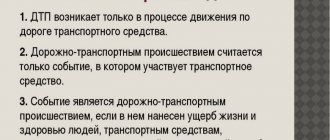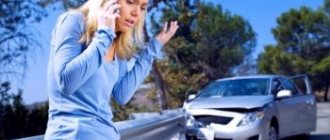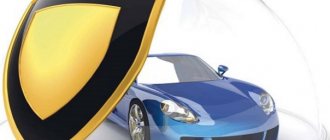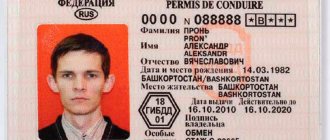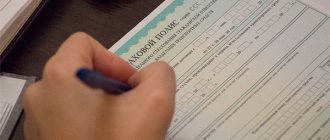Every day you and I become participants in traffic: we travel by public or private transport, bicycle, or simply cross the roadway. At the same time, we must remember that the road is a source of danger, so we need to be very careful and follow the traffic rules. Too frivolous an attitude towards such a seemingly everyday thing can lead to unpleasant consequences - a traffic accident.
Road traffic accident - what is it?
The Road Traffic Rules (hereinafter referred to as traffic rules) give the following definition of an accident (clause 1.2): “An event that occurred during the movement of a vehicle on the road and with its participation, in which people were killed or injured, vehicles, structures, cargo were damaged or other material damage was caused.”
Let's look at it in more detail.
Firstly, an accident is an event, that is, a phenomenon of life that does not depend on the will of people. In other words, something that we would not want to allow, but it happened despite our desire. At first glance, this is an insignificant nuance, but for lawyers it will be important to establish the fact of the “event”, since it will characterize the accident as an accident. Suppose two cars driving behind each other, braking at a traffic light, collided. If the driver behind simply did not have time to brake, say, due to bad weather conditions, that is, he did not want such consequences to occur, then what happened will be an “event.” And further proceedings and the extent of liability of the violator (in this case, restoration of material damage) will depend on this. And if the collision is committed deliberately, that is, at the request of the driver (in the language of lawyers, an “action” will be committed), then in the legal sense the situation changes radically: the driver has violated not just public order, but has encroached on someone else’s life or property, therefore there will be subject to harsher criminal penalties.
Secondly, a vehicle is involved in an accident, and it must move. These two criteria must be met simultaneously. Agree that if hooligans scrawl a bad word on a car parked under the window, then this situation will not be an accident, although your vehicle “participated” in it (the guys will simply be held accountable for damaging someone else’s property). In this case, an important sign of an accident is missing - the movement of the car.
Thirdly, an accident necessarily leads to negative consequences - causing damage (material or damage to health or life). For example, if a pedestrian ran onto the roadway, but the driver managed to brake and did not hit the traffic violator, then such a situation will not be regarded as an accident, because no harm was caused to anyone (except that both escaped with only a slight fright).
Thus, we see that an accident has three main signs:
- Occurs regardless of the will of the participants in the accident.
- One of the participants is a vehicle that is in motion, on the road.
- As a result of an accident, any damage is caused.
How do traffic rules treat a traffic accident?
According to the Rules, an accident is an event that occurred while a car was moving on the road, involving the vehicle itself, as a result of which death occurred, damage to health, property, structures or other material things was caused. This concept is fixed in clause 1.2 of the Traffic Regulations, the Federal Law “On Road Safety” and other legislative norms.
Signs of an accident
In order for an incident to be truly recognized as an accident, it must meet certain conditions:
- Sign of an event: as a result of the action or inaction of an individual, a phenomenon arose, which subsequently continued without his participation. Driving into the oncoming lane (action) or not turning on a turn signal (inaction) happen at the will of motorists, and harm occurs due to the operation of physical laws.
- Sign of vehicle movement: to recognize the fact of an accident, at least one of the vehicles involved must have been in motion. If a stationary car is damaged by a passerby, then the situation is an accident, even if there were no people in the first car. The fall of various things from a window or trees onto a car in the yard is not considered an accident, but is a cause of harm by citizens, public utilities, organizations, etc.;
- A sign of a road traffic process: in case of an accident, the movement of vehicles, people, and cargo on the road surface is established - a surface for movement, including roadsides, sidewalks, railroad crossings, and tram tracks. Despite the fact that courtyards and other adjacent areas are not roads, traffic on them is regulated by traffic rules, therefore collisions on them will be considered accidents;
- Sign of a vehicle: a technical device must be used, the purpose of which is to move people or goods along the roads. Transport can be driven by engines, human power, or animals. Bicycles, motorcycles, trailers, carts and carriages driven by donkeys or horses correspond to the concept of a vehicle, but the animals themselves are not recognized by them;
- Sign of consequences: after an accident, negative consequences must occur in the form of material damage to the environment, other vehicles or people, including their death.
Causes of road accidents
- The most common reason is violation of traffic rules by vehicle drivers. Most often, the following violations lead to emergency situations: Excessive speed. Often, drivers do not comply with the established speed limit, which sometimes leads to dire consequences. When choosing a speed, always take into account the situation on the road, weather conditions and other factors. And remember the popular wisdom: “The slower you go, the further you will go.”
- Violation of overtaking rules. Overtaking is a rather responsible maneuver. Therefore, before you start, you need to make sure that it will be safe for you and other road users. And, of course, you need to follow the simple rules specified in section 11 of the traffic rules: do not start overtaking if the car in front or behind you has already started it, or you doubt that you can safely complete the maneuver; Do not overtake at intersections, railroad crossings, or pedestrian crossings.
A common consequence of failure to comply with overtaking rules is a head-on collision.
- Failure to maintain distance. According to paragraph 9.10 of the traffic rules, the driver must maintain a distance “that would allow him to avoid a collision.”
- Drunk driving. The minimum liability for this violation: a fine of 30,000 rubles and deprivation of the right to drive vehicles from 1.5 to 2 years (Article 12.8 of the Code of Administrative Violations of the Russian Federation). If people were injured due to such driving, then the punishment may result in a prison term (Article 264 of the Criminal Code of the Russian Federation).
Indirect reasons include unreasonably risky behavior on the road, inability to control oneself in an emergency situation, poor physical/mental condition of the driver (illness, fatigue, stress). By and large, they lead to any reason from the list, but they are also worth paying attention to.
Types of accidents
Analyzing the situations in which car drivers most often got into accidents, we can distinguish the following types:
- Collision. A distinction is made between collisions between two moving vehicles (car, electric car, motorcycle and other mechanical vehicles), collisions between a moving vehicle and another that has suddenly stopped, collisions with a train;
- Collisions A collision with a pedestrian (even if it was his fault that he collided with a car);
- Hitting a cyclist;
- Colliding with a stationary vehicle. Please note that the vehicle was not in motion, but was initially standing at the time of the accident (for example, in a parking lot). This is in contrast to a collision where the vehicle was en route but stopped suddenly, for example by braking in front of a pedestrian crossing;
- Hitting or hitting an obstacle;
- Collision with horse-drawn vehicles;
- Hitting animals (wild, domestic, and also birds; including the case when they themselves hit a car);
Types of road traffic accidents (RTA) in the repealed 1998 Rules
In the Rules for recording and analysis of traffic accidents on highways of the Russian Federation, in force until May 12, 2015, approved. By Order of the Federal Road Service of Russia dated May 29, 1998 N 168, road traffic accidents were divided into the following types:
Collision is an incident in which moving vehicles collide with each other or with railway rolling stock.
This type also includes collisions with a suddenly stopped vehicle (in front of a traffic light, during a traffic jam or due to a technical malfunction) and collisions of railway rolling stock with a vehicle stopped (left) on the tracks.
Rollover is an incident in which a moving vehicle overturned (for example, the court came to the conclusion that the overturning of a truck crane on the territory of a joint stock company cannot be regarded as a traffic accident, since it did not occur while the vehicle was moving along the road, as provided for clause 1.1 of the Traffic Rules; resolution of the Federal Antimonopoly Service of the West Siberian District dated October 28, 2008 N F04-6437/2008 (14507-A70-11) in case N A70-470/11-2008).
Collision with a stationary vehicle is an incident in which a moving vehicle collides with a stationary vehicle or a trailer or semi-trailer.
Hitting an obstacle is an incident in which a vehicle runs over or hits a stationary object (bridge support, pole, tree, fence, etc.).
A pedestrian collision is an incident in which a vehicle hits a person or the person collides with a moving vehicle.
This type also includes incidents in which pedestrians were injured by a load or object transported by a vehicle (boards, containers, cable, etc.).
A collision with a cyclist is an incident in which a vehicle hits a cyclist or the cyclist collides with a moving vehicle.
A horse-drawn vehicle collision is an incident in which a vehicle hits draft animals, as well as the carts transported by these animals, or the draft animals or carts transported by these animals hit a moving vehicle. This type also includes hitting an animal.
Actions in case of an accident
What a driver involved in an accident should do is described in Section 2 of the Traffic Regulations.
The exact course of action depends on the situation, but in any case you need to do the following:
- Stop the car or leave the place, depending on the situation.
- Turn on the emergency lights and put up a warning triangle.
If an accident occurs, you need to stop the car and turn on the hazard lights
- Do not touch anything at the scene of the accident. If a car involved in an accident interferes with normal road traffic, then the roadway must be cleared. Before doing this, it is advisable to take photos or videos of the accident site, the location of vehicles on the road, damage and other important details of the accident.
In case of an accident, the driver must place a warning triangle on the road
- Report the incident to the police and wait for further instructions.
- If necessary, help the victims of the accident, call an ambulance.
Another type of accident is a non-contact accident.
The last paragraph of paragraph 3 of Appendix 3 to the specified rules for recording and analyzing traffic accidents on highways..., apparently, also included “another type of accident.” We are talking, in particular, about so-called non-contact accidents.
In a non-contact accident due to the fault of the driver of the vehicle (who violated the traffic rules), harm is caused to third parties, while there is no physical contact between the vehicle of the harm-doer and the vehicle of the injured person (as well as any other object to which the harm was caused). For more information on the topic of non-contact road accidents, see the article “Non-contact road accidents. Arbitrage practice"
Responsibility for an accident
Responsibility for an accident will follow if it occurred through someone else’s fault, and not due to some objective insurmountable reasons (for example, natural disasters). The type of liability and punishment for a traffic accident depends on the type and severity of the damage caused, and on whether people were injured due to the accident. It also takes into account whether traffic rules were violated and whether the driver could have prevented the accident. Most often, several types of liability discussed below occur simultaneously, therefore the punishment for an accident is a complex of sanctions.
Civil liability
Occurs in almost every case of an accident and represents monetary compensation by the guilty party for all damage caused as a result of the accident. This is legally enshrined in Article 1079 of the Civil Code of the Russian Federation: a citizen is obliged to compensate for the damage caused by his car unless he proves that the damage arose as a result of force majeure - an extraordinary unpreventable event, for example, a natural disaster - or the intent of the victim.
The driver whose fault the accident occurred must be prepared to pay for all damage caused:
- For damaged material objects: vehicles, cargo transported on them, various buildings and structures that were damaged as a result of the accident.
- Expenses for medical care and treatment for victims of the accident, and, possibly, compensation for moral damage.
- Funeral expenses if a person died as a result of an accident; compensation for moral damage to his relatives.
It should be noted that thanks to compulsory motor liability insurance, the expenses of the person responsible for the accident may be less, since the full amount or part of it will be paid by the insurance company. If material damage is caused within 400 thousand rubles, and health damage is within 500 thousand rubles, then the insurance fully covers it; everything above these amounts will have to be paid to the person at fault for the accident.
Administrative responsibility
Chapter 12 of the Code of Administrative Offenses of the Russian Federation (hereinafter referred to as the Code of Administrative Offenses of the Russian Federation) provides for fines and other penalties for various violations of traffic rules. Therefore, administrative liability in case of an accident will occur if it was caused by any of the traffic rules violations specified in the Code of Administrative Offenses of the Russian Federation (but legally this will be liability for a traffic violation, and not for an accident).
Also, the driver who is guilty of an accident, the consequence of which was the infliction of light or moderate harm to human health, is brought to administrative responsibility. The consequences in the first case are a fine of two to five rubles or deprivation of a driver’s license for a year to one and a half years; in the second case - a fine of 10-25 thousand rubles or rights for one and a half to two years (Article 12.24 of the Code of Administrative Offenses of the Russian Federation).
Criminal liability
Occurs when an accident has led to the most serious consequences - people were seriously injured or killed as a result of the accident. In this case, the cause of the accident was violation of traffic rules or rules for operating the vehicle by the driver. In this case, liability is provided for in Article 264 of the Criminal Code of the Russian Federation. Let us immediately note that a fatal outcome will be considered not only the case when the victim died at the scene of the accident, but also if he died within the next 7 days. Below is a list of consequences of an accident and possible penalties in each situation.
- Serious harm to human health has been caused (that is, life-threatening or involving any organ or its functions): restriction of freedom for up to 3 years;
- forced labor for up to 2 years (plus, this may be supplemented by deprivation of the right to hold certain positions or engage in certain activities for up to 3 years);
- arrest for 6 months;
- imprisonment for up to 2 years (may add deprivation of the right to hold certain positions or engage in certain activities for up to 3 years).
Further, absolutely all punishments must be supplemented with a sanction in the form of deprivation of the right to hold certain positions or engage in certain activities for up to 3 years (unlike the above case, where such a sanction may or may not be added - at the discretion of the court).
- Serious harm to human health was caused, while the driver was drunk: forced labor for up to 3 years;
- prison term up to 4 years;
- forced labor for up to 4 years;
- prison term from 2 to 7 years;
- forced labor for up to 5 years;
- prison term from 4 to 9 years.

